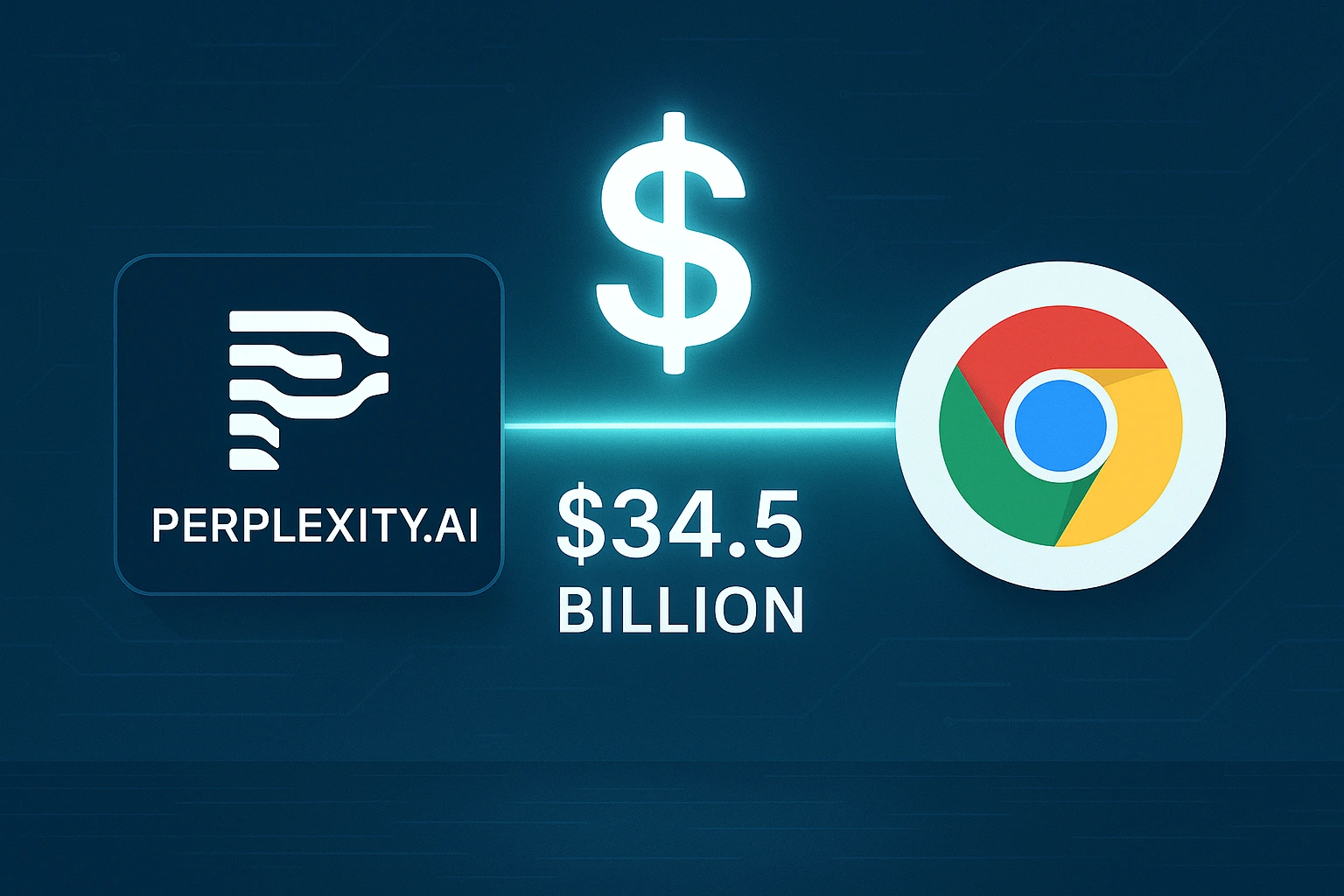Meta Platforms, the tech powerhouse behind Facebook, Instagram, and WhatsApp, has taken another major leap in artificial intelligence with the release of Llama 4, its next-generation AI system. This release solidifies Meta’s intent to be a dominant force in the AI arms race, directly challenging the likes of OpenAI, Google DeepMind, Anthropic, and other key players in the AI ecosystem.
Meta’s latest rollout includes two impressive models—Llama 4 Scout and Llama 4 Maverick—that are already making waves in the AI community. With powerful specifications and a focus on open-weight accessibility, these models are not just about competing—they’re about reshaping the foundation of how AI is developed and shared.
Llama 4: The Evolution of Meta’s AI Strategy
Meta first introduced its LLaMA (Large Language Model Meta AI) family to the world as part of its commitment to democratizing AI through open research. While other companies, like OpenAI, have kept their models behind closed doors, Meta has consistently advocated for transparency and collaboration, releasing models with open weights and encouraging community development.
The release of Llama 4 builds upon the successes—and lessons—of Llama 2, but it’s not just an upgrade. It represents a fundamental shift toward multimodal AI, an approach that integrates not just text, but also images, audio, and video, into a single intelligent system. This is the future of generative AI: systems that can perceive and create across multiple mediums.

Meet Llama 4 Scout and Llama 4 Maverick
Let’s break down the two new models currently available for public interaction and testing.
1. Llama 4 Scout
Size: 17 billion parameters
Architecture: Mixture-of-Experts (MoE) with 16 experts
Hardware: Runs on a single NVIDIA H100 GPU
Context Length: Supports up to 10 million tokens
Scout is designed to be incredibly fast, efficient, and lightweight while still offering elite-level performance. It was engineered to run on lower hardware requirements, making it more accessible to developers and startups without massive computing budgets.
Even with its smaller size, Scout outperforms leading models like Gemma 3, Gemini 2.0 Flash-Lite, and Mistral 3.1 in several standard benchmarks. This makes it ideal for real-time applications, mobile deployment, and use cases that require low latency but high intelligence.
2. Llama 4 Maverick
Size: Active 17 billion parameters from a pool of 128 experts
Power: High-performance multimodal capability
Use Cases: Content creation, coding, reasoning, and STEM tasks
Maverick is the flagship public model of the Llama 4 release. It balances performance and computational efficiency through the MoE structure, activating only a fraction of the full model at a time. This allows Meta to deliver top-tier output at a fraction of the cost and energy usage of models like GPT-4.
In benchmark tests, Llama 4 Maverick holds its ground—and even surpasses—rival models like GPT-4o, Gemini 2.0 Flash, and DeepSeek V3 in specific areas like mathematical reasoning, coding accuracy, and long-context retention.

What Is Mixture-of-Experts (MoE) Architecture?
Both Scout and Maverick leverage the Mixture-of-Experts (MoE) architecture. But what does that mean?
Instead of relying on a single large model (where all parameters are active during inference), MoE models activate only a subset of specialized “experts” for any given task. For example, a model might have 128 different “experts” but only use 16 of them at a time, depending on what’s being asked.
This approach offers two major benefits:
Efficiency: Less computational power is needed per task.
Specialization: Experts can specialize in different areas, boosting accuracy and flexibility.
It’s like having a team of highly skilled professionals, each handling different topics, rather than one overworked generalist trying to do it all.
Meta Is Training Llama 4 Behemoth: The Next Titan
Beyond the Scout and Maverick models, Meta is actively training a third, much larger model known as Llama 4 Behemoth. While it’s not yet available to the public, early reports suggest it could be one of the most powerful models ever developed.
Llama 4 Behemoth Stats (Preliminary):
Size: 400+ billion total parameters
Active Parameters: 288 billion during use
Performance: Surpasses GPT-4.5, Claude Sonnet 3.7, and Gemini 2.0 Pro on STEM and reasoning tasks
Purpose: Designed to act as a “teacher model” for training smaller AI agents
Meta has dubbed this model a “teacher”, suggesting it will be used to train and improve future smaller Llama models through knowledge distillation and reinforcement learning.
Why Meta Delayed the Llama 4 Launch
Originally, Meta had planned to release Llama 4 much earlier. However, they held back due to concerns over the model’s reasoning quality, conversational reliability, and mathematical precision.
According to The Information, internal benchmarks suggested that Llama 4 wasn’t quite ready to compete with GPT-4-level capabilities, especially in dynamic conversation and real-time voice generation. Meta wanted to ensure it met user expectations before making the models widely available.
This cautious, deliberate rollout reflects Meta’s growing maturity in the AI space. Rather than rushing out a half-baked product, they’ve opted to polish and perfect—a move that might ultimately serve them well in winning developer trust.
Where and How to Use Meta AI (Llama 4)
If you’re curious to try out Llama 4, there are already several places to interact with it:
-
Meta AI Assistant: Integrated into WhatsApp, Instagram DM, Messenger, and Facebook Search
-
Meta AI Website: https://meta.ai
-
Hugging Face: Models available for testing and integration
-
Llama.com: Meta’s official model hosting and documentation platform
Meta’s AI assistant supports not just basic text chat, but also image generation, contextual memory, summarization, and more.

Llama 4 vs GPT-4: How Does It Stack Up?
While GPT-4 remains a gold standard in terms of general performance, Llama 4 offers a compelling open-source alternative. Here’s a quick comparison:
| Feature | Llama 4 Maverick | GPT-4 |
|---|---|---|
| Access | Open-weight (free use) | Closed (API access only) |
| Multimodal Support | Yes | Yes (text, image, audio) |
| Context Length | 10M tokens | 128k tokens (GPT-4-turbo) |
| Architecture | MoE | Dense |
| Use Cases | Dev tools, research | General-purpose |
Meta’s $65 Billion AI Infrastructure Investment
Meta is putting its money where its mouth is—allocating a staggering $65 billion in 2025 for AI research and development. A major portion of this will go toward:
Scaling AI infrastructure (data centers, GPUs, networking)
Advancing Llama models
Enhancing Meta AI across apps and devices
Expanding their open-source ecosystem
This level of investment indicates that Meta is not just experimenting—it’s all-in on AI as the core pillar of its future strategy, much like its metaverse ambitions in recent years.

The Future of Open-Source AI: Why Llama 4 Matters
Meta’s Llama 4 isn’t just another model release. It signals a paradigm shift in the AI world. While most leading models today are locked behind APIs and corporate firewalls, Meta is offering a truly open platform—something that encourages innovation and global collaboration.
With open weights, researchers can:
Train the models on their own data
Fine-tune for specific industries (healthcare, legal, finance)
Detect and fix biases
Build completely new applications without corporate restrictions
In many ways, Llama 4 is laying the foundation for a more inclusive AI ecosystem—where small teams and large enterprises alike can experiment, build, and thrive.
Final Thoughts: A Turning Point in AI History?
Meta’s launch of Llama 4 Scout, Maverick, and the soon-to-arrive Behemoth may go down in history as a turning point for open-source AI. With unmatched performance-to-efficiency ratios, multimodal capability, and transparent access, Meta is proving that AI doesn’t have to be a closed game.
Whether you’re a developer, researcher, startup founder, or simply curious about AI—this is a moment worth paying attention to.
The AI revolution is here, and thanks to Meta, it’s becoming more open, accessible, and powerful than ever before.







